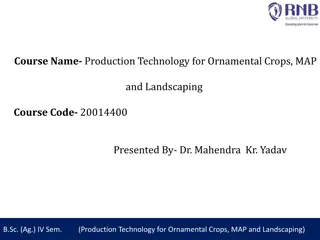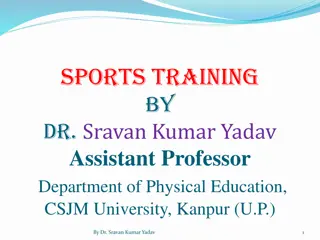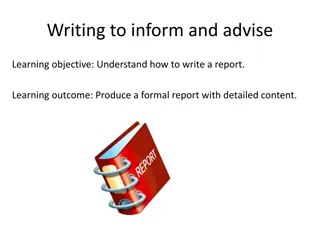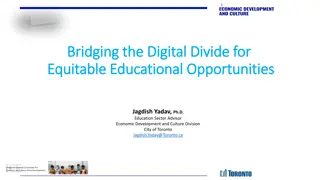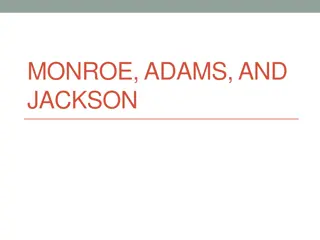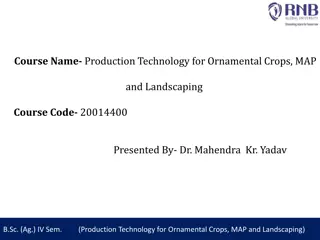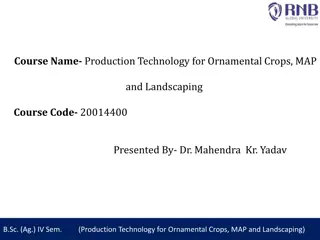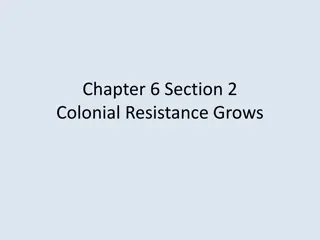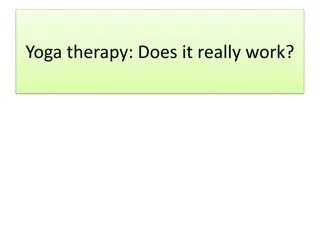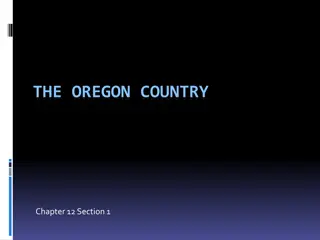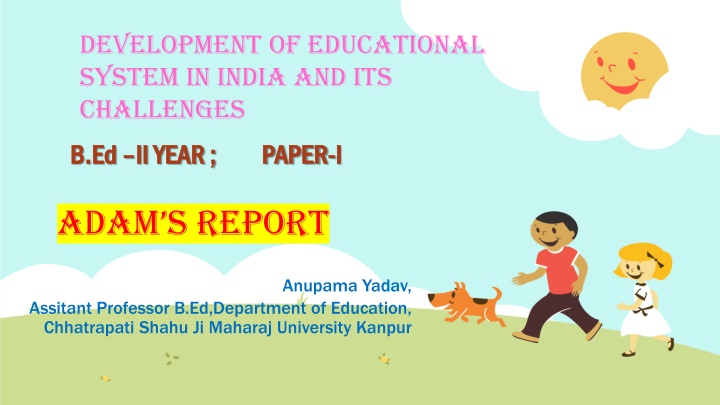
Challenges in Indian Educational System: Historical Insights from William Adam
Explore the challenges faced by the educational system in India through the lens of William Adam, a Christian missionary who became a staunch supporter of Indian education in the 19th century. Discover his reports and observations on schools, teachers' salaries, women's education, and more in Bengal and Bihar. Uncover the historical context and influences that shaped the development of education in India.
Download Presentation

Please find below an Image/Link to download the presentation.
The content on the website is provided AS IS for your information and personal use only. It may not be sold, licensed, or shared on other websites without obtaining consent from the author. If you encounter any issues during the download, it is possible that the publisher has removed the file from their server.
You are allowed to download the files provided on this website for personal or commercial use, subject to the condition that they are used lawfully. All files are the property of their respective owners.
The content on the website is provided AS IS for your information and personal use only. It may not be sold, licensed, or shared on other websites without obtaining consent from the author.
E N D
Presentation Transcript
Development of educational system in india and its challenges B.Ed B.Ed II YEAR ; PAPER II YEAR ; PAPER- -I I AdAm s report Anupama Yadav, Assitant Professor B.Ed,Department of Education, Chhatrapati Shahu Ji Maharaj University Kanpur
William Adam William Adam, a Christian priest of Buddhist faith, came to India in 1818 and spend nearly 3 decades was an enthusiastic missionary. He came to India to spread the propaganda of Christianity and culture, But influenced by Indian culture and knowledge science, he became a great supporter and lover of Indian education. In 1818 came to Serampore in India.
Continued... In Calcutta, he was so influenced by Raja Ram Mohan Roy that he became a monotheistic and became a fierce opponent of the British officers. William Adam was appointed by the Governor- General of India, Lord William Bentick in 1835. He wanted to serve India through journalism and educational survey. He studied the educational conditions of Bengal from 1835 to 1838 and submitted important report.
AdAms report Viceroy Lord William Bentick appointed Adams as special commissioner to survey the prevailing education system in Bengal and its related areas. For this work, Bentick decided to provide the amount of Rs.1000 statue to Adams. Adam started the survey work in 1835 in the education system being operated in the areas of Bengal and Bihar. He kept track of all educational activities for three consecutive years and in these 3 years he had reported three reports in 1835, 1836 and 1838 presented respectively.
First report -1835 Adams presented his first report on July 1835. In this report, he collected the following information. According to his survey, he had run school in Bengal and Bihar, there were 100,000 schools in Bengal and there was no such village in Bengal where there was no primary school, there was a school on every 450 people in this area. The land for the school was donated by rich wealthy citizens.
Continued These schools used to carry land donation and other financial expenditure to the landlord and other rich sections. The condition of the schools was not very prosperous. The salary of the teachers appointed in the school was very low. There was fear among people in the name of women's education; at that time there was only arrangement of girls' education system in only wealthy and progressive homes.
Continued... Due to superstition that the literate daughter was soon a widow after marriage, the woman's education was synonymous with fear and sorrow. In the Hindu school, Indian culture, Sanskrit and Bengali language were studied, while Muslim schools were taught Arabic, Persian languages. The Urdu language was the common language spoken in Muslim at that time.
Continued Just like Hinduism, the Muslim religion was afraid of female education and considered it inauspicious. Clearly, the above description of the prevalence of prevalence of superstitions in India was estimated to have been blinded by blind faith. Adams had created this report with very enthusiasm.
Second Report - 1836 William Adams presented his second report in December 1836. In this report, he presented educational statistics of the Thana Nattur of District Rajshahi. He collected many information through the survey, which is as follows Thana Nattur had a total population of 19,95,296 on 27 schools. There were 405 villages in the total area, out of which 260 students were getting education. In the total of 27 schools, 10 were in Bangla 4 in Arabic language 4 in Persian and 2 in both Bengali and Persian schools.
Continued 2380 children of 158 families of 248 villages were studying at home. Teachers' salary was 5 rupees per month, which was very low and was not helpful in meeting the needs of the teachers, but this teacher was concerned with diligence in teaching work, without worrying only due to the feeling of reverence and dedication. . Lack of female education was undone. This entire region was considered an intellectually affluent area but here the real situation of education was extremely tragic, so the status of other India can be imagined.
Third report -1838 Adams presented his third and final report in February 1838. In this report, presented evidence of Murshidabad, Vardhaman, Tirhut , Virbhume , South Bihar by surveying areas in it. o At that time 2567 schools were being operated in these areas. oIn the above mentioned school, about 30900 students were getting education. oThere were 6 schools for girls, in which about 210 girls were getting education.
Continued In almost all schools, Bengali Sanskrit Hindi Persian Arabic was being studied. Studies of Bengali and Sanskrit in the above mentioned languages used to be studied in Hindu and Arabic and Persian Muslims. A total of eight schools taught English language along with the above mentioned languages, of which there were a total of 250 students. The condition of schools was still regrettable. Some people of the rich class were doing voluntary arrangements for teachers' salary in schools.
AdAms educAtionAl plAnning & inferences Adam presented his education system based on the facts and figures of the survey in his report. In this plan, the future education plan was asked to take the following steps- The principle of filtration is anti-public, so it should not be implemented. This scheme is to be tested in some districts. The country schools running in India, Maktab and Madarsa are the major ranks of national education, hence their education should be arranged by the development itself.
ContInued For the education of people a district education officer should be appointed in every district. Teachers get regular salaries. Government schools should be given financial assistance on behalf of the government. With the help of Indian and Western education experts, text books should be made in oriental languages. Proper management of students' exams
Continued... Normal schools should be arranged for the training of teachers, for the untrained teachers, running three-three months training program every year and completing their training program within 4 years. Schools of land should also be provided in the form of grants. Arrangements for agricultural education
Evaluation of AdAms report Adams favors mass education in India and favors Indian education system for Indians. He did not survey the entire area of both the Bengal and Bihar provinces. The education plan presented in Adams was an incomplete plan for the Indians. The purpose of education for the Indians not in this scheme was clear and neither the curriculum was clear.
Continued.... In rural areas, the people who did not get land grant was not ensured. Failure theory was opposed. Indians were endorsed to impart education through Indian languages of Indian base. It was also suggested to provide teachers' training, pay increment and financial assistance to schools.
REFRENCES REFRENCES 1. 1. Agrawal J.C:Development and Planning of Modern Agrawal J.C:Development and Planning of Modern Education(2008).Vikas Publishing House, New Delhi Education(2008).Vikas Publishing House, New Delhi 2. 2. Altekar,A.S:Education in Ancient India(1958).Nand Altekar,A.S:Education in Ancient India(1958).Nand Kishore and Brothers,Varanasi. Kishore and Brothers,Varanasi. 3. 3. Lal Behari Raman Prof:Development of Lal Behari Raman Prof:Development of Education System in India and its Challenges .Vinay Rakheja System in India and its Challenges .Vinay Rakheja Publisher Edition 2008 Publisher Edition 2008

